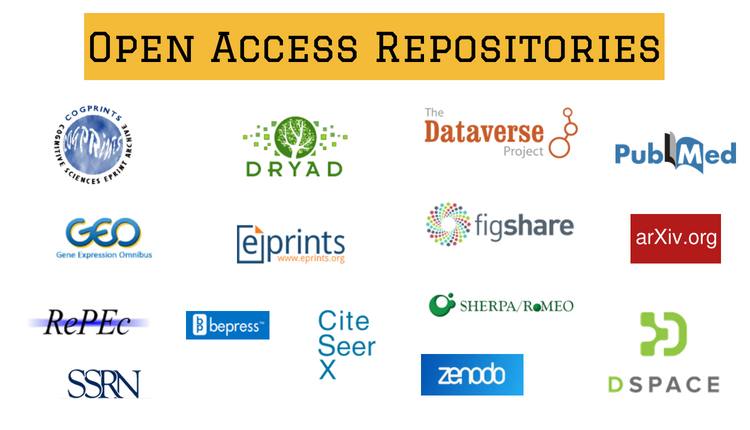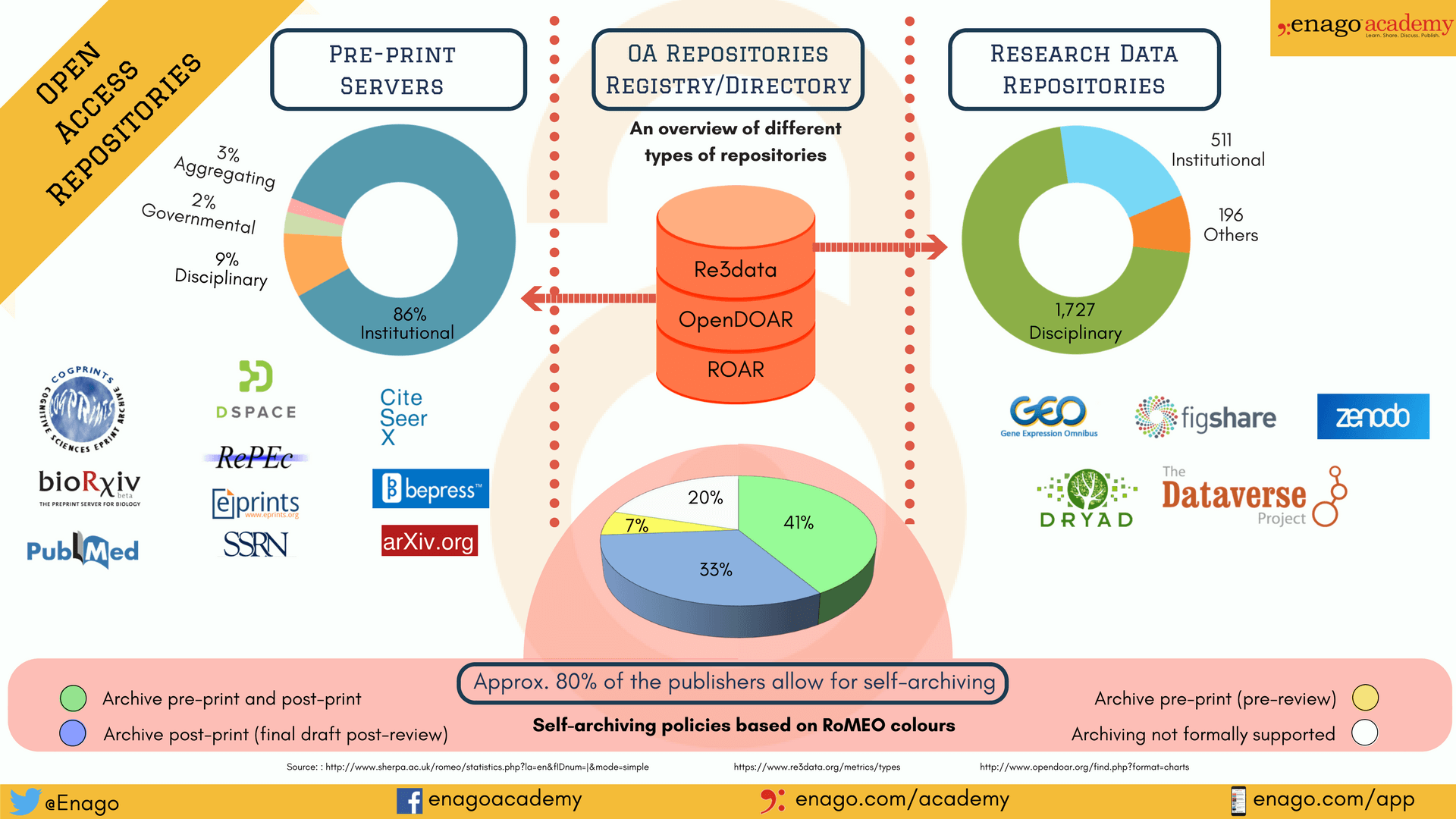Open Access Repositories: Self-Archiving Your Publications

In the first and the second part of the open access (OA) infographic series, we discussed popular open access journals across different disciplines and shared eye-opening statistics on open access policies and mandates. In the concluding infographic of this series, we share some interesting insights on OA repositories.
OA repositories or archives enable researchers to share their research output on a digital platform that allows easy and free access to everyone. Repositories are generally organized by subject area. However, certain institutions also maintain archives that cut across disciplines. These repositories can house different types of content, namely articles, books, monographs, data, multimedia files (audio/video), conference proceedings, and more. With the development of effective search engines, change in publisher’s OA policies, and the emergence of new storage and publishing technologies, open access repositories are here to stay.
In this infographic, we discuss the different types of OA repositories and their contribution to the OA publishing landscape. Interestingly, the presented data also depict how publishers are rapidly adopting the self-archiving policies.
(Click to enlarge the infographic)










